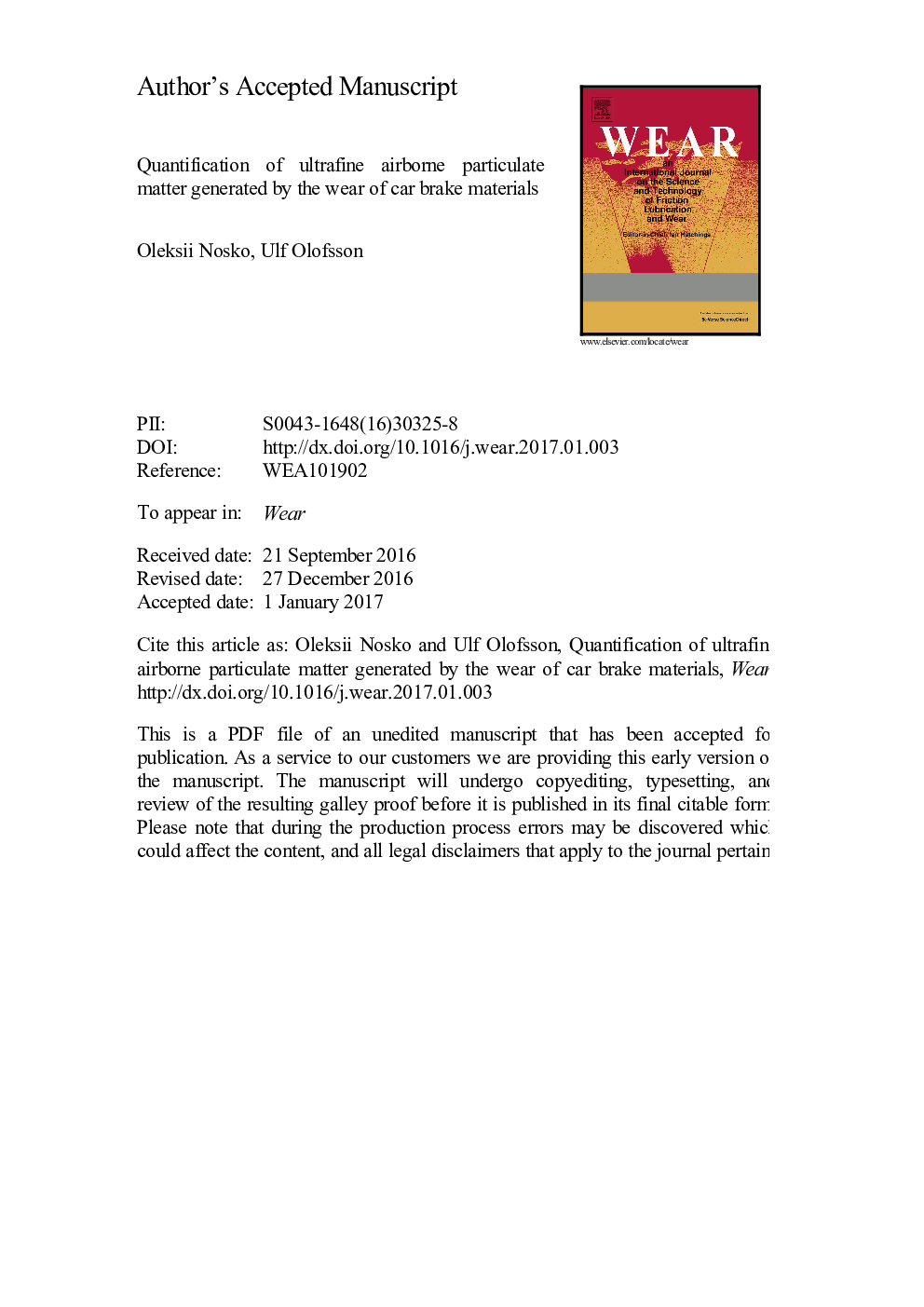| Article ID | Journal | Published Year | Pages | File Type |
|---|---|---|---|---|
| 4986810 | Wear | 2017 | 15 Pages |
Abstract
The wear of car brakes is one of the main sources of airborne particulate matter in urban environments. Ultrafine wear particles are of special environmental interest since they can easily penetrate the human body through inhalation and cause various diseases. In the present study, the contribution of ultrafine particles to airborne particulate matter emitted from car brake materials was investigated under different friction conditions. Particles were generated using a pin-on-disc machine located in a sealed chamber and analysed in terms of number, volume and mass concentrations. It was found that temperature has a strong influence on the size distribution of the emitted particles. At temperatures below 200 °C, the ultrafine particles make no measurable contribution to the mass concentration of airborne particles with diameters smaller than 10 µm (PM10). However, at temperatures above 200 °C, the mass fraction of the ultrafine particles in PM10 reaches tens of percent. In general, this fraction increases with the temperature and decreases with the sliding duration. The mass contribution of ultrafine wear particles to PM10 is substantial, and it should not be neglected in environmental and tribological studies.
Related Topics
Physical Sciences and Engineering
Chemical Engineering
Colloid and Surface Chemistry
Authors
Oleksii Nosko, Ulf Olofsson,
